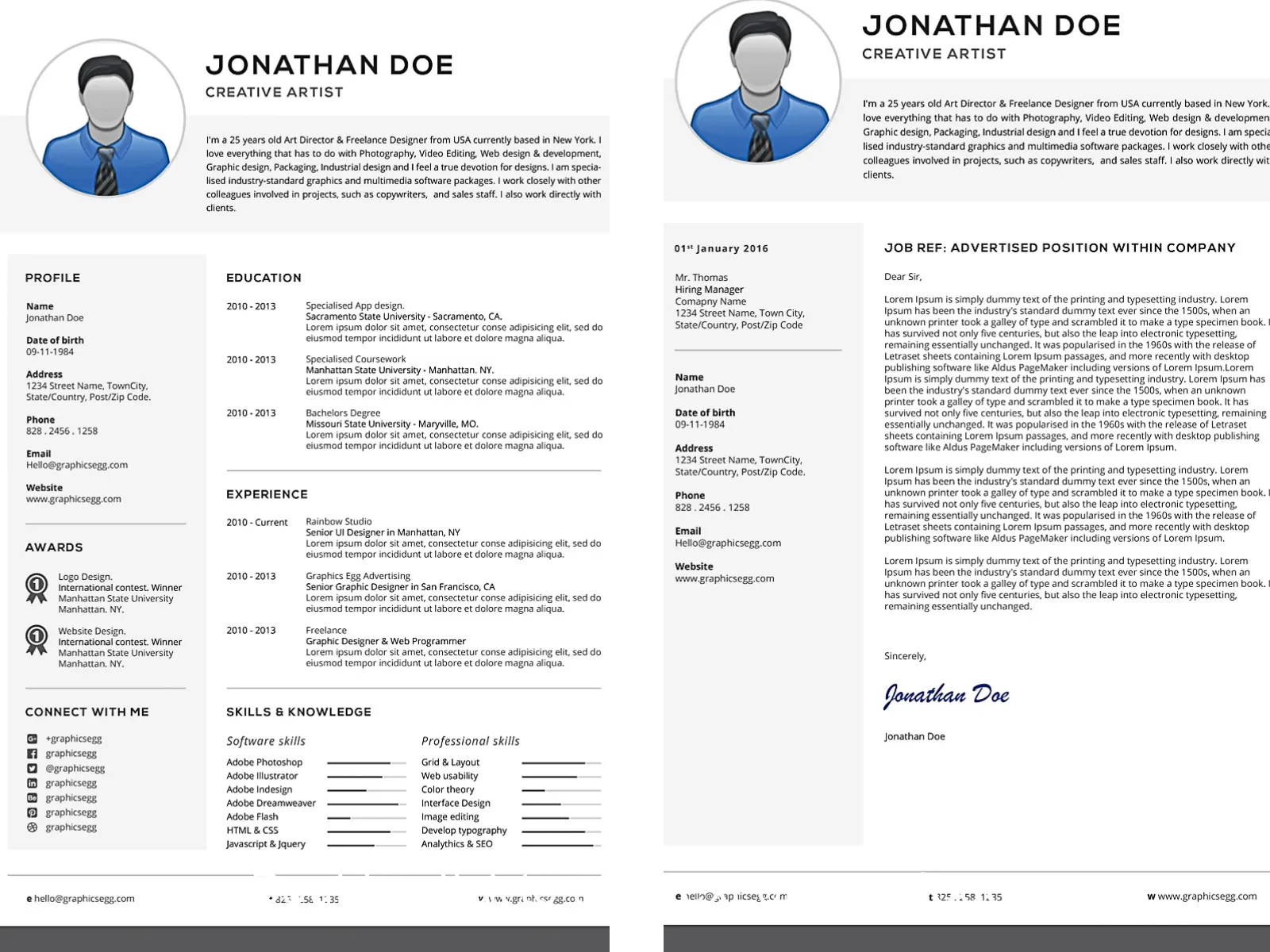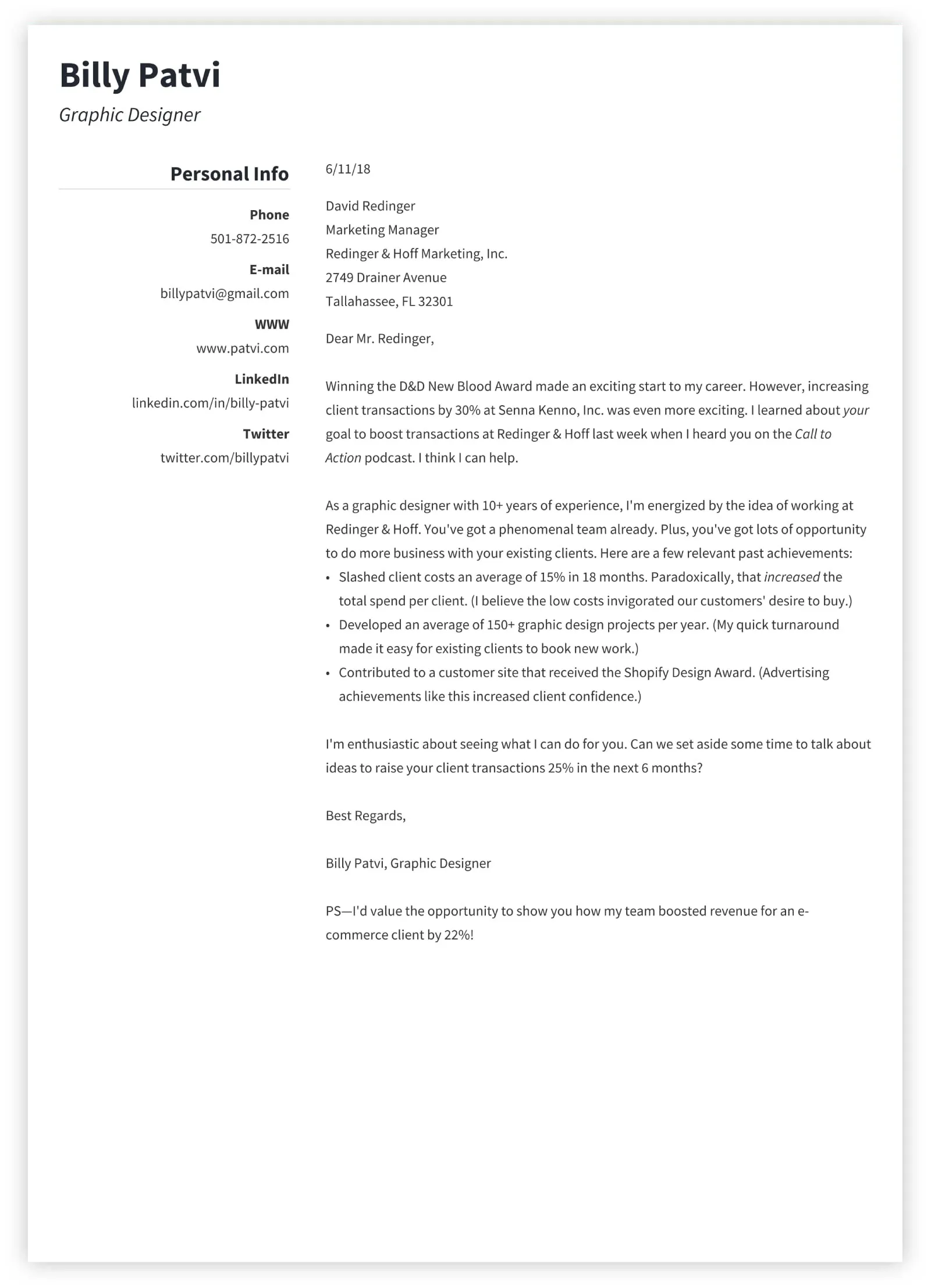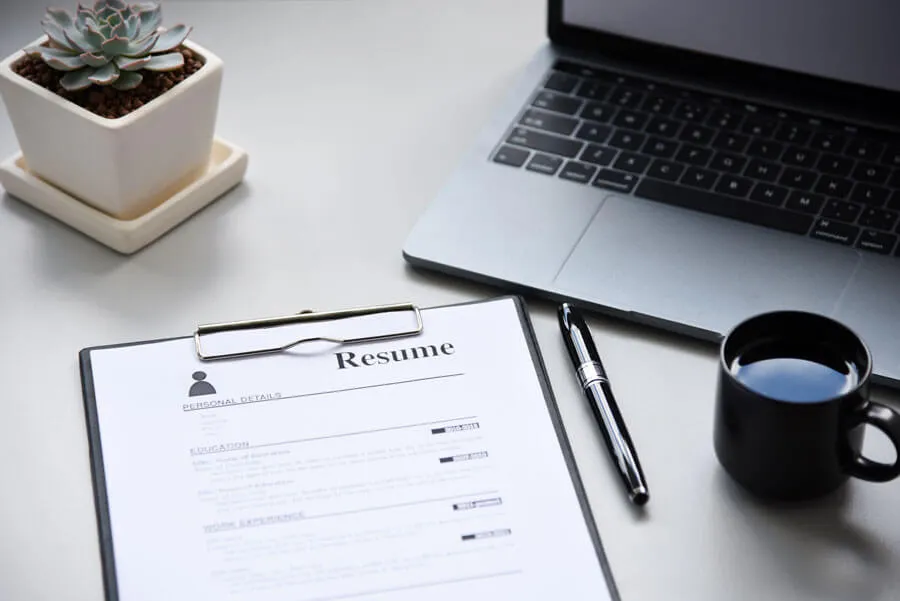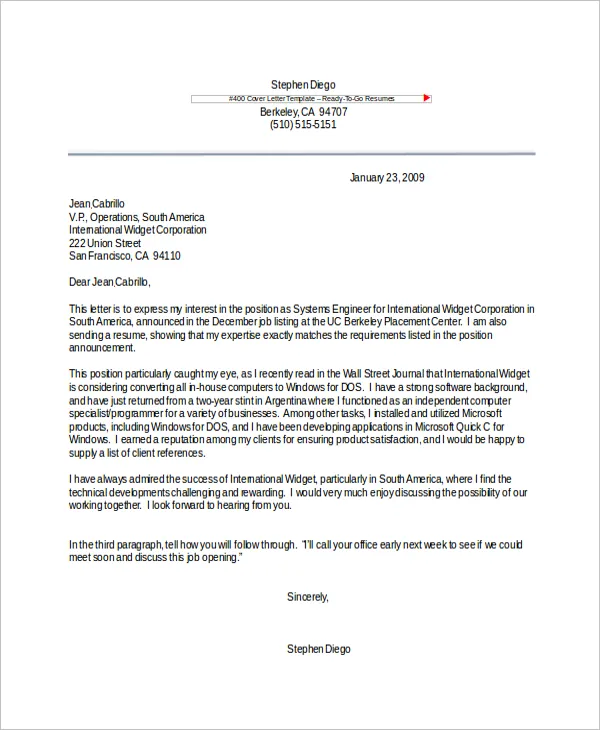What is a Resume Cover Letter
A resume cover letter is a crucial document that accompanies your resume when applying for a job. It serves as your introduction to a potential employer, providing an opportunity to express your interest in the position and highlight your qualifications. Unlike a resume, which offers a concise overview of your skills and experience, a cover letter allows you to elaborate on your accomplishments, explain your career goals, and demonstrate your personality. It’s your chance to make a strong first impression and convince the hiring manager that you’re the perfect candidate for the role. A well-crafted cover letter can significantly increase your chances of getting an interview, making it an essential part of your job application package. Remember, a compelling cover letter is not merely a repetition of your resume; it’s a narrative that tells your unique story and connects your qualifications to the specific job requirements.
The Purpose of a Cover Letter
The primary purpose of a cover letter is to introduce yourself to the hiring manager and demonstrate your suitability for the job. It’s your opportunity to showcase your personality, enthusiasm, and communication skills, setting you apart from other applicants. A cover letter allows you to explain how your skills and experience align with the job requirements and company values. Moreover, it helps you bridge the gap between your resume and the job description, providing context and emphasizing your relevant accomplishments. By clearly articulating your career goals and explaining why you’re interested in the specific role and company, you demonstrate your genuine interest and commitment. This is more than just an formality; it’s a vital step in securing an interview and ultimately landing the job. Think of it as your chance to make a persuasive case, going beyond the surface-level details in your resume to create a lasting impression on the hiring team. (cover-letter-purpose.webp)
Key Components of a Cover Letter

A well-structured cover letter typically includes several key components, each serving a specific purpose in presenting your qualifications and enthusiasm. These components work together to create a cohesive and compelling narrative. The structure begins with your contact information, the date, and the recipient’s details, ensuring the letter is properly addressed. The salutation, such as ‘Dear Mr./Ms. [Last Name],’ sets a professional tone. The body of the letter is divided into paragraphs, where you introduce yourself, explain your interest in the role, highlight your skills and accomplishments, and express your enthusiasm for the company. It’s crucial to tailor each section to the specific job and company, demonstrating your research and understanding. The closing paragraph reiterates your interest and includes a call to action, such as expressing your availability for an interview. Finally, the complimentary close and your signature complete the letter. Each element must be carefully crafted to create a positive and memorable impression. (cover-letter-components.webp)
Header and Contact Information
The header of your cover letter is the first thing the hiring manager will see, so it’s essential to get it right. Start with your full name, professional title (if applicable), phone number, email address, and optionally, your LinkedIn profile URL. This information should be clearly presented, typically aligned to the left or right of the page. Below your contact information, include the date, followed by the recipient’s details, including their full name, title, and the company’s address. If you know the hiring manager’s name, address the letter to them directly; otherwise, use a general salutation like ‘Dear Hiring Manager’. Ensuring this information is accurate and formatted correctly shows your attention to detail and professionalism. A clean, well-organized header sets a positive tone and makes it easy for the reader to contact you. Be sure your email address sounds professional; avoid using a casual or outdated email address. (cover-letter-header.webp)
The Salutation
The salutation sets the tone for your entire cover letter. Addressing the hiring manager by name is always the preferred approach, as it demonstrates that you’ve taken the time to research the company and the specific role. Use ‘Dear Mr./Ms./Mx. [Last Name]’ if you know the hiring manager’s name. If the hiring manager’s name is not available, use a professional alternative like ‘Dear Hiring Manager’ or ‘Dear [Department Name] Team’. Avoid generic salutations like ‘To Whom It May Concern,’ as they can make your letter feel impersonal and less engaging. Always double-check the spelling of the recipient’s name and title. A well-chosen salutation shows respect and professionalism. If you can’t find a specific name, consider reaching out to the company’s HR department or searching on LinkedIn to find out the hiring manager’s name. This extra effort can make a significant positive impact. (cover-letter-salutation.webp)
Body Paragraph 1 Grab Their Attention

The first body paragraph is your opportunity to grab the hiring manager’s attention and make them want to read more. Start by clearly stating the position you’re applying for and how you learned about the opportunity. Briefly express your enthusiasm for the role and the company. Instead of a generic introduction, consider using a compelling opening statement that highlights your key qualifications or a relevant achievement that aligns with the job requirements. This paragraph should be concise and impactful, setting the stage for the rest of your letter. Demonstrate your understanding of the company’s mission or values, showing that you’ve done your research. Avoid starting with clichés like ‘I am writing to express my interest…’ Instead, begin with a strong statement that immediately showcases your relevant skills or experience. Your goal is to make the reader want to learn more about you. (cover-letter-skills.webp)
Body Paragraph 2 Highlight Your Skills
The second paragraph should highlight your relevant skills and experience in detail, using specific examples to demonstrate how you meet the job requirements. Focus on the key skills and qualifications mentioned in the job description and provide evidence of your accomplishments. Quantify your achievements whenever possible, using numbers and data to showcase your impact. For example, instead of saying ‘Managed social media accounts,’ you could say ‘Increased social media engagement by 30% in six months.’ Tailor this section to match the specific needs of the employer, demonstrating that you understand the role and the challenges involved. Use action verbs to describe your responsibilities and accomplishments. Connect your skills to the company’s needs, showing how you can contribute to their success. This paragraph is crucial in proving your value to the hiring team. (cover-letter-skills.webp)
Body Paragraph 3 Show Your Enthusiasm
In the final body paragraph, express your enthusiasm for the company and the specific role. Explain why you are excited about the opportunity and how your values align with the company’s mission or culture. This is the perfect place to showcase your genuine interest and demonstrate your knowledge of the company. Highlight what attracts you to the company and why you want to work there, referencing any recent achievements or initiatives by the company that resonate with you. Show how your career goals align with the company’s values. Mention any specific projects, teams, or aspects of the job that particularly interest you. This demonstrates your genuine interest, not just in a job, but in a career at the specific organization. The goal is to make the hiring manager believe that you would be a great fit for their company. (cover-letter-enthusiasm.webp)
The Closing Paragraph and Call to Action

The closing paragraph should reiterate your interest in the position and include a clear call to action. Thank the hiring manager for their time and consideration, and express your eagerness to discuss your qualifications further. Restate your interest in the role and your belief that you would be a valuable asset to the team. Include a concise statement about your availability for an interview and how they can contact you (although they already have your contact information). Avoid being overly assertive; instead, express your willingness to provide additional information or references as needed. End with a professional closing, such as ‘Sincerely’ or ‘Best regards,’ followed by your typed name. Make sure that you review the entire letter for tone and grammar. A strong close reinforces your professionalism and leaves a positive lasting impression. (cover-letter-closing.webp)
Formatting and Design of a Cover Letter
The formatting and design of your cover letter are crucial for making a positive first impression. A well-formatted letter is easy to read and demonstrates your professionalism and attention to detail. Use a standard business letter format, ensuring that your contact information, the date, and the recipient’s details are properly aligned. Keep the margins at 1 inch on all sides for a clean, uncluttered look. Use a clear and readable font, such as Times New Roman, Arial, or Calibri, with a font size between 10 and 12 points. Ensure consistent spacing throughout the letter, including single spacing within paragraphs and a blank line between paragraphs. Proofread carefully and check for any grammatical errors or typos. A well-formatted letter conveys a sense of professionalism. (cover-letter-formatting.webp)
Font and Readability
The font and readability are two key aspects of a well-designed cover letter. Choose a font that is easy to read and professional. Common and appropriate choices include Times New Roman, Arial, and Calibri. Avoid using overly decorative or unusual fonts, as they can distract from the content. The font size should be between 10 and 12 points to ensure readability without appearing too large or too small. Use a consistent font throughout the document. Ensure that the spacing between lines and paragraphs is sufficient to create a clean and uncluttered look. Consider using bold or italics sparingly, for emphasis on important points. A well-chosen font and proper formatting ensure that your cover letter is visually appealing and easy to read, making a positive impression on the hiring manager. Be mindful of the overall visual presentation. (cover-letter-formatting.webp)
Length and Structure

The length and structure of your cover letter play a crucial role in its effectiveness. A cover letter should typically be no more than one page in length. Keep it concise and focused, highlighting your key qualifications and expressing your interest in the position. A well-structured cover letter typically follows a standard format: a header with your contact information, a salutation, an introductory paragraph, two to three body paragraphs, a closing paragraph, and a professional closing. Ensure that each paragraph addresses a specific point and flows logically. Use clear and concise language, avoiding jargon or overly complex sentences. Tailor your letter to the specific job requirements, highlighting relevant skills and experiences. A concise and well-structured letter is more likely to capture the hiring manager’s attention and leave a lasting impression. (cover-letter-formatting.webp)
Proofreading and Editing
Proofreading and editing are crucial steps in ensuring that your cover letter is free of errors and presents you in a professional light. Carefully review your letter for any typos, grammatical errors, and punctuation mistakes. Reading your cover letter aloud can help you identify awkward phrasing or sentences that do not flow smoothly. Use a spell checker and grammar checker, but don’t rely on them entirely. Consider having a trusted friend, colleague, or career advisor review your letter as a fresh set of eyes can often catch errors that you might miss. Pay attention to the tone and language of your letter, ensuring that it is professional, enthusiastic, and tailored to the specific job and company. A polished and error-free cover letter demonstrates your attention to detail and commitment to excellence, which can significantly improve your chances of making a positive impression. (cover-letter-formatting.webp)
Examples of Effective Cover Letters
Reviewing examples of effective cover letters can provide valuable insights into the structure, content, and tone of successful job applications. Look for examples that are tailored to specific industries, roles, or company cultures. Pay attention to how the writers introduce themselves, highlight their skills, and express their enthusiasm. Analyze the language used, the tone, and the overall style. Consider how the examples are formatted, with clear headings, well-structured paragraphs, and a professional design. Identify how the examples are tailored to the specific job description and company. Note how the writers quantify their accomplishments and provide evidence of their skills. Use these examples as a guide when writing your own cover letter, adapting the content and style to reflect your unique qualifications and experiences. Remember to personalize your letter and make it your own, ensuring that it aligns with your career goals and the specific requirements of the job you are applying for. (cover-letter-examples.webp)
Common Mistakes To Avoid

Avoiding common mistakes can significantly improve the effectiveness of your cover letter. One of the most significant errors is failing to tailor your letter to the specific job and company. Generic, one-size-fits-all cover letters are often quickly discarded. Another common mistake is neglecting to proofread the letter carefully for typos, grammatical errors, and formatting inconsistencies. Other errors include repeating information from your resume verbatim, using passive language, and failing to highlight your accomplishments with specific examples. Avoid negative language or complaining about previous employers. Do not write excessively long letters; keep them concise and to the point. Make sure to avoid clichés and generic phrases. Ensure that your contact information is accurate and up-to-date. By avoiding these common pitfalls, you can create a cover letter that effectively showcases your qualifications and increases your chances of getting an interview. (cover-letter-mistakes.webp)
Using Keywords in Your Cover Letter
Using keywords in your cover letter can help you get noticed by applicant tracking systems (ATS) and hiring managers. Carefully review the job description and identify the key skills, qualifications, and requirements. Integrate these keywords naturally into your cover letter, highlighting your relevant experience and accomplishments. Use keywords in your skills section, in the descriptions of your previous roles, and in your summary statements. However, avoid keyword stuffing, as this can make your letter sound unnatural and unpersuasive. Focus on providing relevant context and demonstrating how your skills and experiences align with the job requirements. The goal is to show that you are a good fit for the role, not just to include as many keywords as possible. Use a balance of industry-specific terms and common phrases to make your letter easily searchable and readable. (cover-letter-keywords.webp)
Tailoring Your Cover Letter for Each Job
Tailoring your cover letter for each job is a critical step in increasing your chances of success. Generic cover letters are often perceived as impersonal and do not reflect a genuine interest in the specific opportunity. Start by thoroughly reviewing the job description and identifying the key requirements and qualifications. Then, customize your letter to address these specific needs, highlighting your relevant skills and experiences. Showcase how your background aligns with the company’s values, and demonstrate that you understand the company’s mission and industry. Use examples from your previous experiences that demonstrate your ability to meet the job’s requirements. Research the company and the hiring manager to gain insights into their priorities. By tailoring your letter to each job, you demonstrate your genuine interest, attention to detail, and commitment to the specific role. (cover-letter-tailoring.webp)
Tools and Resources For Cover Letter Writing

Several tools and resources can assist you in writing an effective cover letter. Utilize online cover letter templates to structure your letter and ensure that you include all the necessary components. Use a resume builder to create a well-formatted resume that complements your cover letter. Take advantage of grammar and spell-checking tools to ensure that your letter is free of errors. Consider using a cover letter writing service or career coach for personalized feedback and advice. Explore online resources, such as job boards and career websites, for examples of successful cover letters and job application tips. Take advantage of professional editing and proofreading services to refine your letter and ensure that it is polished and professional. Always tailor your cover letter to the specific job and company. By leveraging these tools and resources, you can create a compelling cover letter that grabs the hiring manager’s attention. (cover-letter-tools.webp)
